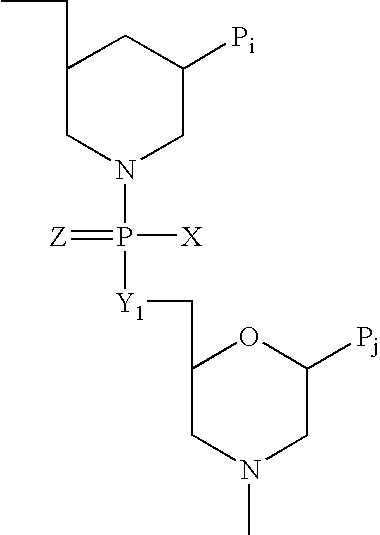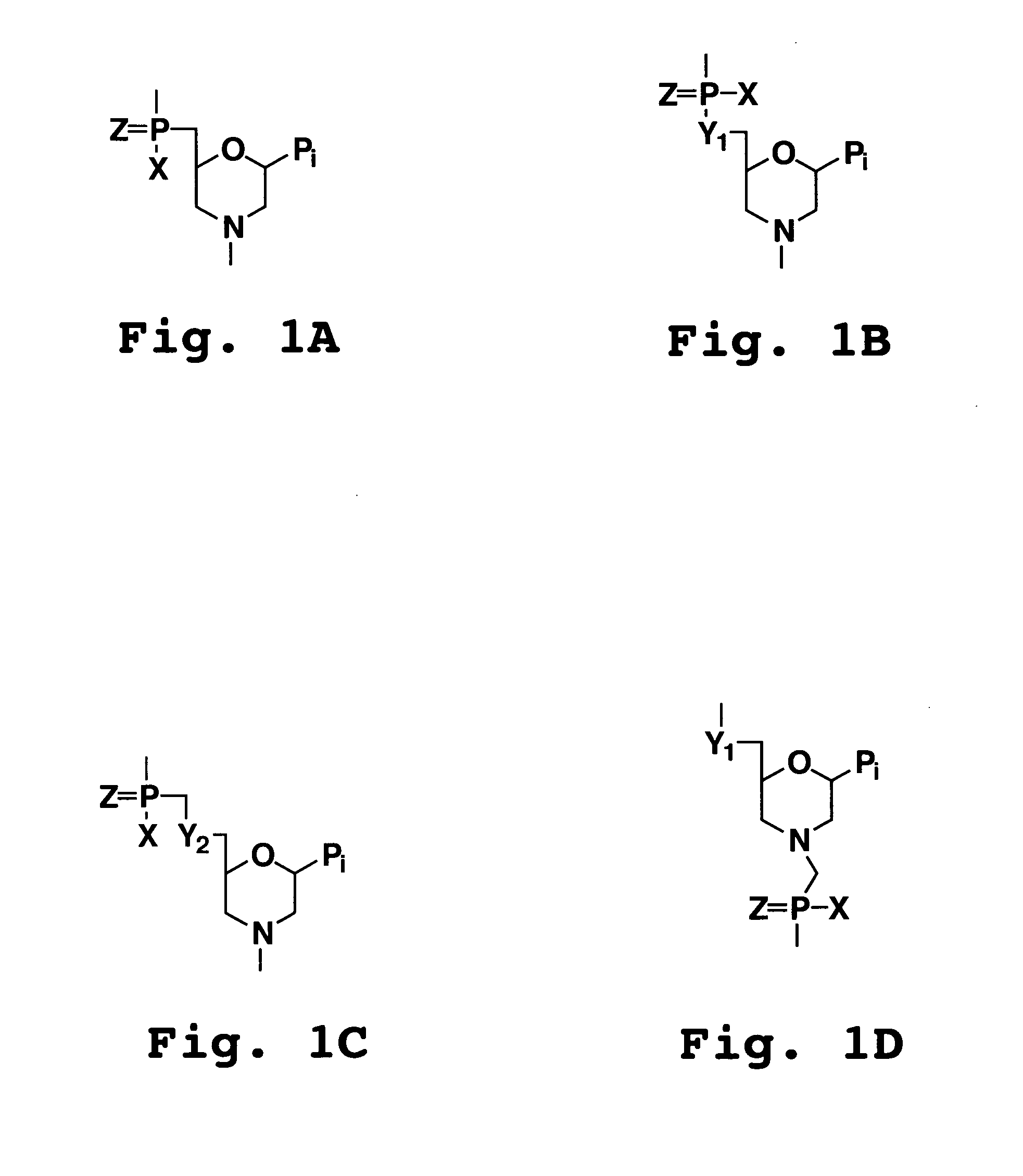Antisense restenosis composition and method
a composition and anti-restonosis technology, applied in the field of compositions and methods for treating restenosis, can solve the problems of inability to predict the response to treatment, the incidence of restenosis is limited, and the incidence of restenosis remains a serious risk factor, so as to reduce the risk of restenosis
- Summary
- Abstract
- Description
- Claims
- Application Information
AI Technical Summary
Benefits of technology
Problems solved by technology
Method used
Image
Examples
example 1
In Vivo Studies with Antisense Oligomer:RNA Heteroduplexes
[0136] Calibration studies performed using an instrument capable of detecting fluorescein conjugated oligomers (Applied Biosystems Model 672 GeneScanner) were used to determine the migration rates of fluorescein-conjugated oligomers of various lengths; a 15-mer, a 20-mer, a 24-mer and a 38-mer ribozyme. Concentrations were evaluated in a GeneScanner.
[0137] Rats were injected with carboxyfluorescein-conjugated phosphorodiamidate morpholino oligomers (PMO) which is antisense to rat cytochrome P-4503A2.
[0138] Chromatograms of plasma samples prepared from blood withdrawn at the various times post-PMO administration showed the following. Plasma samples prepared from rats one hour post-injection contained fluorescent components which migrated at 270 and 340 minutes (two peaks due to the two possible carboxyfluorescein linkages which migrate differently). Plasma samples prepared from rats 24 hours post-injection contained fluores...
PUM
| Property | Measurement | Unit |
|---|---|---|
| Tm | aaaaa | aaaaa |
| Tm | aaaaa | aaaaa |
| Tm | aaaaa | aaaaa |
Abstract
Description
Claims
Application Information
 Login to View More
Login to View More - R&D
- Intellectual Property
- Life Sciences
- Materials
- Tech Scout
- Unparalleled Data Quality
- Higher Quality Content
- 60% Fewer Hallucinations
Browse by: Latest US Patents, China's latest patents, Technical Efficacy Thesaurus, Application Domain, Technology Topic, Popular Technical Reports.
© 2025 PatSnap. All rights reserved.Legal|Privacy policy|Modern Slavery Act Transparency Statement|Sitemap|About US| Contact US: help@patsnap.com



